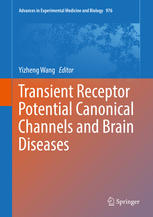

Most ebook files are in PDF format, so you can easily read them using various software such as Foxit Reader or directly on the Google Chrome browser.
Some ebook files are released by publishers in other formats such as .awz, .mobi, .epub, .fb2, etc. You may need to install specific software to read these formats on mobile/PC, such as Calibre.
Please read the tutorial at this link: https://ebookbell.com/faq
We offer FREE conversion to the popular formats you request; however, this may take some time. Therefore, right after payment, please email us, and we will try to provide the service as quickly as possible.
For some exceptional file formats or broken links (if any), please refrain from opening any disputes. Instead, email us first, and we will try to assist within a maximum of 6 hours.
EbookBell Team

5.0
70 reviewsThis book discusses the latest findings on the physiological and pathological functions of transient receptor potential canonical/classical (TRPC) proteins in the brain. In addition to reviewing the functions of TRPCs in brain development and neuron transmission, it mainly covers the potential roles of TRPCs in brain disorders. TRPC proteins belong to the TRP channel superfamily, which has around 30 members. Just like TRP channels, TRPCs are non-selectively permeable to cations, with a selectivity of calcium over sodium that varies among different members. The TRPC subfamily consists of six members, grouped on the basis of the similarities in gene sequence and protein structure in mammalians. What sets TRPCs apart from other subfamilies in TRPs is that their activation, stimulated by a membrane receptor-phospholipid C (PLC) cascade, contributes to the slow and sustained elevation of intracellular free calcium. Calcium ions, one of the most important types of second messengers, mediate a variety of physiological functions in the brain, including progenitor cell proliferation, dendritic formation, synaptic transmission and neuronal survival. All TRPCs except TRPC7 have been found in various regions of the brain, including the cerebrum, cerebellum, forebrain and hippocampus. This book provides students and investigators with comprehensive information on the regulation, function and potential of TRPCs and brain diseases in order to attract more attention to this field.